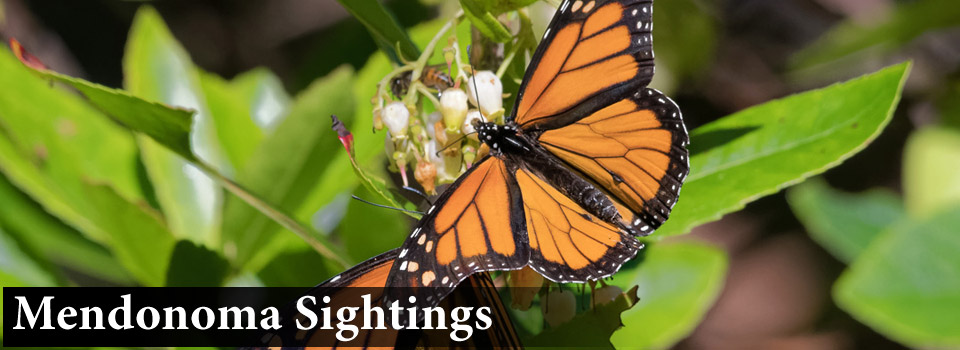A few weeks ago the Moon and Venus were side by side in the sky. I took these photos from our deck in Anchor Bay. A lone fishing boat was still plying the waters.
A peaceful, beautiful moment in time here on the Mendonoma Coast.

It's practically impossible to tell an Allen's Hummingbird and a Rufous Hummingbird apart. Even experienced birders have difficult time. Let's face it, they look the same to me! Ron LeValley suspects this is a Rufous, as they migrate through our area as this time of year.
If you look closely at Ron's photo, you will see a tiny spider on the hummer's beak. Great shot! Rufous Hummingbirds migrate north as far as Alaska and then return south in the fall - or in the case of the Mendonoma Coast, late summer - sometimes all the way to Central America. Quite a migration for such a tiny bird.
Rufous Hummingbirds are very feisty. Two have shown up in my garden in Anchor Bay. They are having aerial battles with the resident Anna's Hummingbirds. It's quite a show.
To hear the sound of this hummingbird, here's the link to the Cornell Lab of Ornithology: http://www.allaboutbirds.org/guide/rufous_hummingbird/sounds
Thanks to Ron for allowing me to share his beautiful photo with you here. I can almost hear this hummer's wing beats. To see much more of Ron's photography, here's his website: http://www.levalleyphoto.com/home/
You'd expect to find Prince mushrooms on the Mendonoma Coast in summer. And, in fact, they are fruiting. But with the unusual heavy rain we received the end of June, we've have autumn mushrooms fruiting now - King Boletes, Chanterelles, a lone Sweettooth Hedgehog and several Cocorras. Now a Dyer's Polypore has fruited, at least a month earlier than normal. Is this the new normal? Time will tell. Nan Brichetto photographed this beauty Saturday in our forest in Anchor Bay.
This fungus helps the forest by decomposing dead wood. It is prized by dyers of yarn. When young, like this specimen, it dyes yarn yellow or orange. As the polypore ages it will dye yarn a warm brown.
Thanks to Nan for allowing me to share her photo with you here. I will enjoy watching this mushroom evolve and plan on sharing photos for you to see in the weeks to come.
Manzanita bushes are native to California. We have several different types on our property in Anchor Bay. This big specimen is peeling, something manzanitas do every year.
Once the manzanita has done shedding its outer bark, smooth and silky bark remains. It's almost impossible not to run your fingers along a red branch once the peeling is done. When the bark peels, it's difficult for insects and other organisms to stay attached to the bush. So it is partly a defensive mechanism.
Manzanita bushes, with their beautiful branches, add beauty to the Mendonoma Coast.
Andrew's Clintonia, Clintonia andrewsiana, is a lovely member of the Lily family. They grow in shaded forests. We have a few on our land in Anchor Bay and we cherish them. This Clintonia is about a foot and a half tall.
In the summer, if a Deer doesn't eat the flower head, the flowers turn into blue berries. Rozann Grunig photographed this Clintonia last year. It's other common name is Blue Bead Lily. Now you can see why!
This is another wildflower that should never be picked. The flowers need to develop into these seeds. They will fall to the ground and, if they find a nurturing spot, will take root. They are very slow to develop. We have several "babies" and, even after ten years, they aren't big enough to flower.
Thanks to Rozann for allowing me to share her photo of the blue berries.